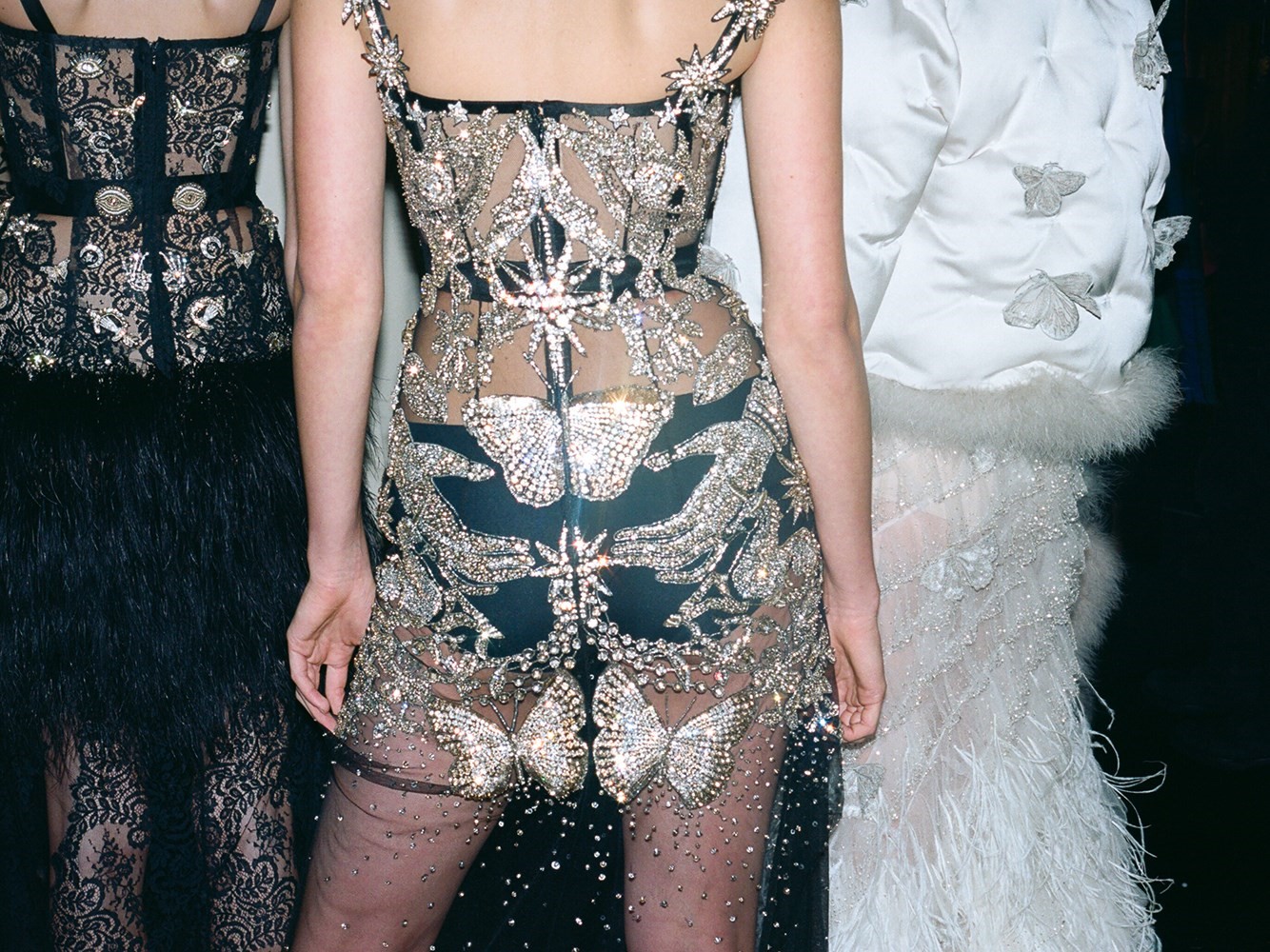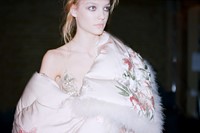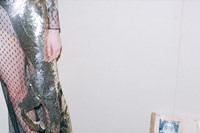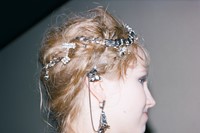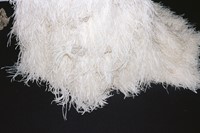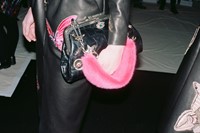"It’s about obsessions and things that come out at night," Sarah Burton said of her Autumn/Winter 2016 women’s ready-to-wear collection for Alexander McQueen. That her attention to detail is obsessive needs no explaining but this time, perhaps more than ever, that came to the fore. It was evident, as always, in the extraordinary workmanship involved in the creation of garments – the tiniest silver and gold beads and sequins hand sewn onto ‘celestial’ capes and gowns, in the embroidery and over-embroidery of motifs over clothing but also the underwear worn beneath it, the jewelled hair slides, chokers, earrings, necklaces and fastenings on inky black mink collars. Moths and garlands of flowers nestled in feathers and decorated the hems of clothing. Swarms of butterflies gathered at the bodices of gowns. There was layer upon layer upon layer of it and the most remarkable thing was, perhaps, that the end result was so light. Delicate, ethereal – magical, really.
For any fashion obsessives out there, meanwhile, the show, which marked the return of the house of Alexander McQueen’s mainline collection to the British capital after an absence of more than a decade, was staged at the Royal Horticultural Halls in London’s Victoria where Lee Alexander McQueen’s Spring/Summer 1997 collection, La Poupée took place almost 20 years ago. Models that time walked on water. In fact, it was the first show Sarah Burton worked with the designer on. "Dreams and reality, surrealism, vanity, unicorns, moths, butterflies, flowers…" she continued of this latest showing.
Obscure Objects of Desire
Luis Bunuel, Man Ray, Salvador Dali, Elsa Schiaparelli… Floating lips, pearl-edged clock faces, glittering eyes, splashes of 'shocking' pink… The blurring of the boundaries between dream and reality that was so central to the surrealist movement has interested this designer for some time now. And so apparently random motifs were placed alongside one another, thereby disassociating them from their assumed meaning and indeed suggesting a place somewhere between reality and dreams, the conscious and the subconscious. The dominant silhouette of the collection owed more than a little to the surrealist heyday, too: a strong 1940s or crescent moon shoulder-line on tailoring and languid featherweight gowns, and a narrowness throughout, was entirely in keeping with that period as well as the discreetly disorientating mood. The forties shoulder, incidentally, is a long-time McQueen signature: Alexander McQueen himself had a soft spot for the work of couturier Jacques Fath.
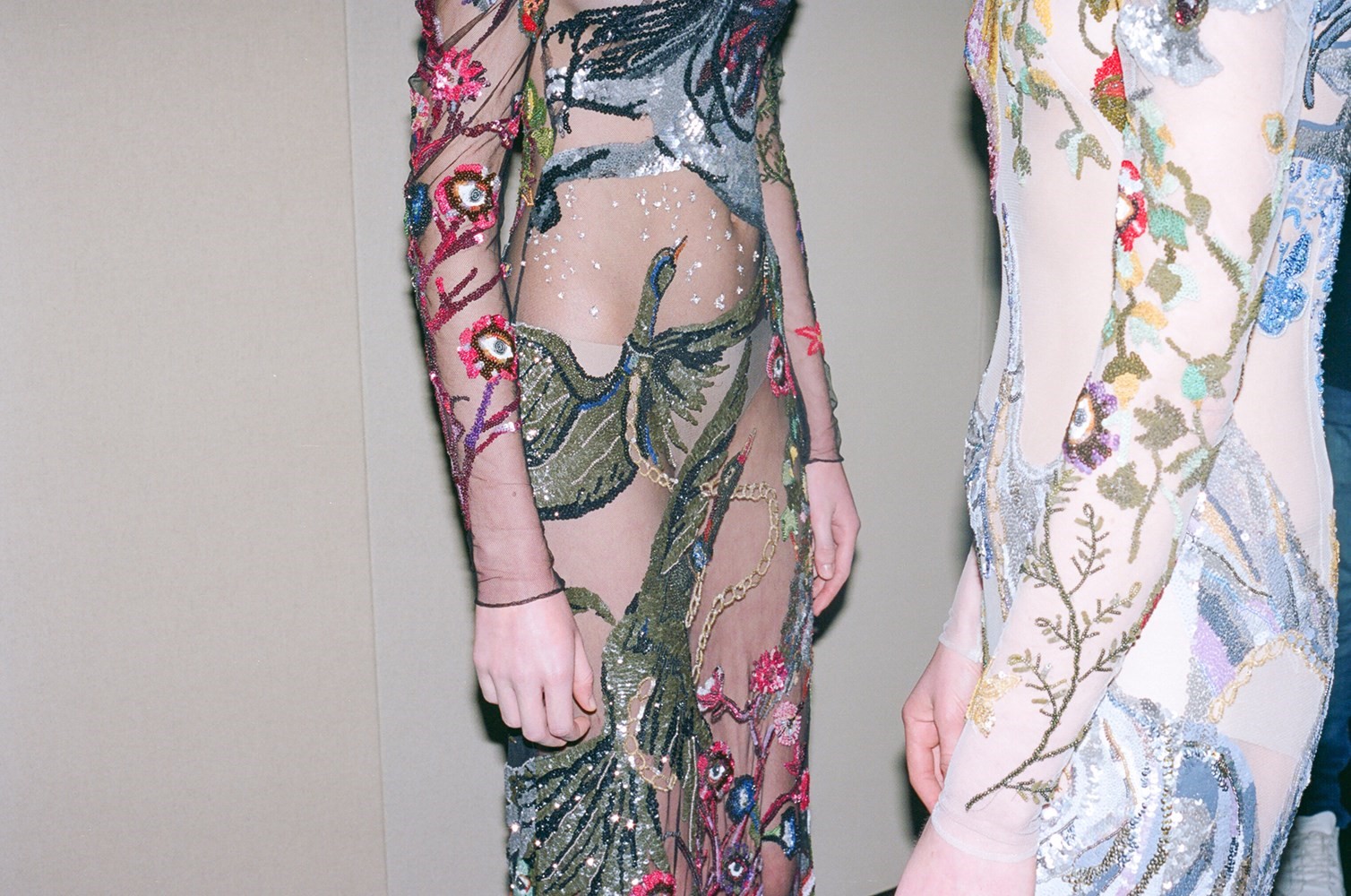
Evening Dressing
There were two main threads to the narrative here: the tuxedo and the codes of the boudoir. Yves Saint Laurent was famously the first designer to reinvent the former for women in 1966, thus providing a no-frills alternative to more overtly feminine night-time attire. Fifty years on and Sarah Burton cut neat jackets, oversized coats and lean bondage trousers in black satin-backed wool, deconstructing lapels which were draped or layered. The other side of the story – the boudoir – was, in direct contrast, quintessentially feminine. Quilted silk satin eiderdown coats were the size of, well, eiderdowns, cutaway silk petticoat dresses, bras and cami knickers edged with lace, girlish shades of pink and pearl and fluttering marabou were prevalent throughout. Sometimes the two came together, most obviously in a 'Le Smoking' jacket the peplum of which curved over a black, feathered skirt worn over the aforementioned trousers. This particular exit also seemed to reference Saint Laurent’s two most iconic looks: the Le Smoking, of course, but also the Spring/Summer 1968 sheer black chiffon dress with marabou skirt.
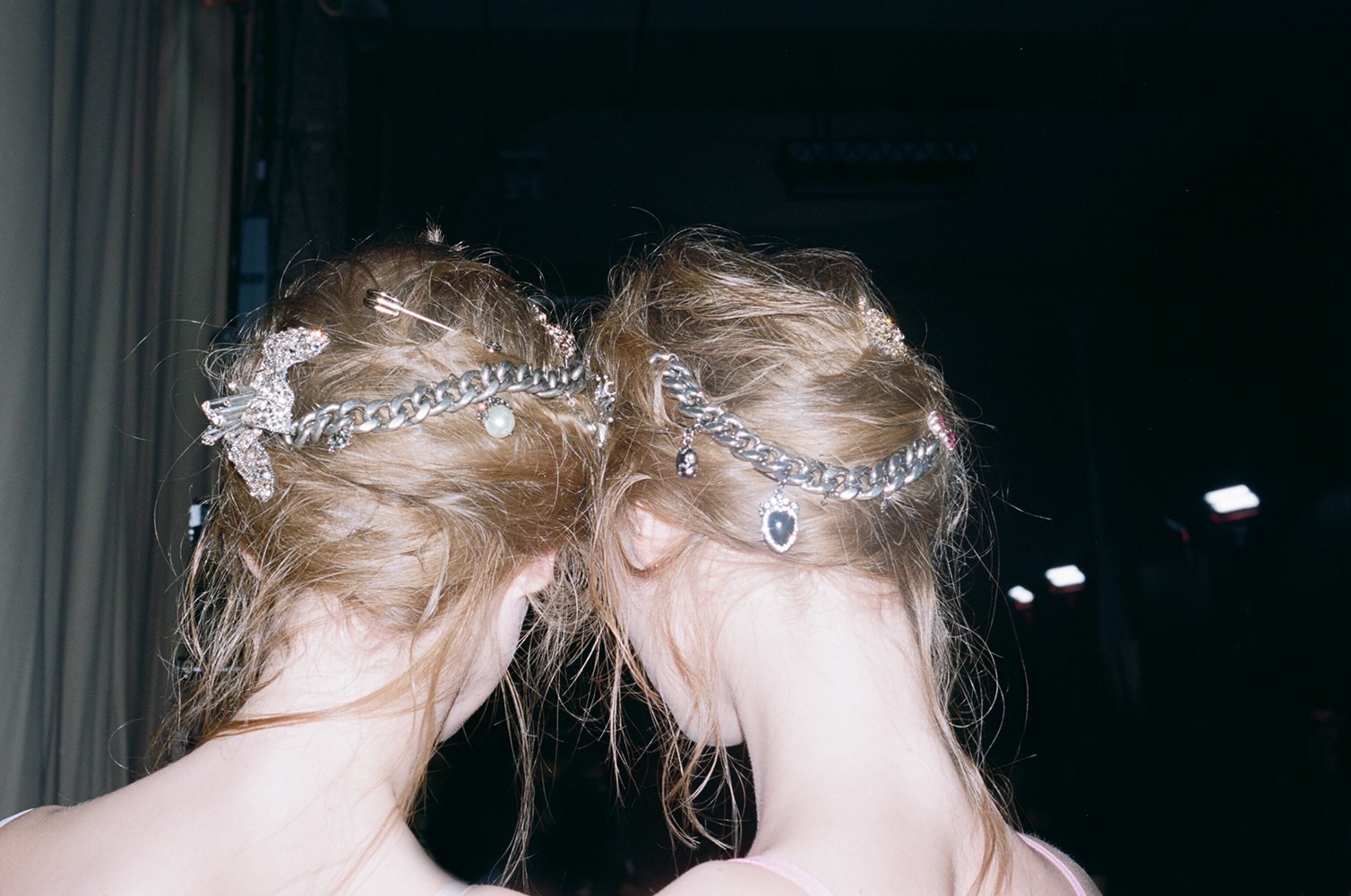
White Flowers and Night Flowers
It is widely believed that the reason the scent of night flowers (jasmine and tuberose, in particular) is so intoxicating is that they have to work harder for attention – and pollination – in the dark. They are an acquired taste not least because of the presence of the organic compound indole found in all of them is also, considerably less romantically, in faeces. To some the smell of white flowers is overwhelming and it is certainly far from polite which, to others, is the secret of its allure. For the collection, their waxy blooms were hand-painted onto leather coats and corsets worn over ruffled and tiered lace dresses and embroidered onto sheer silks.
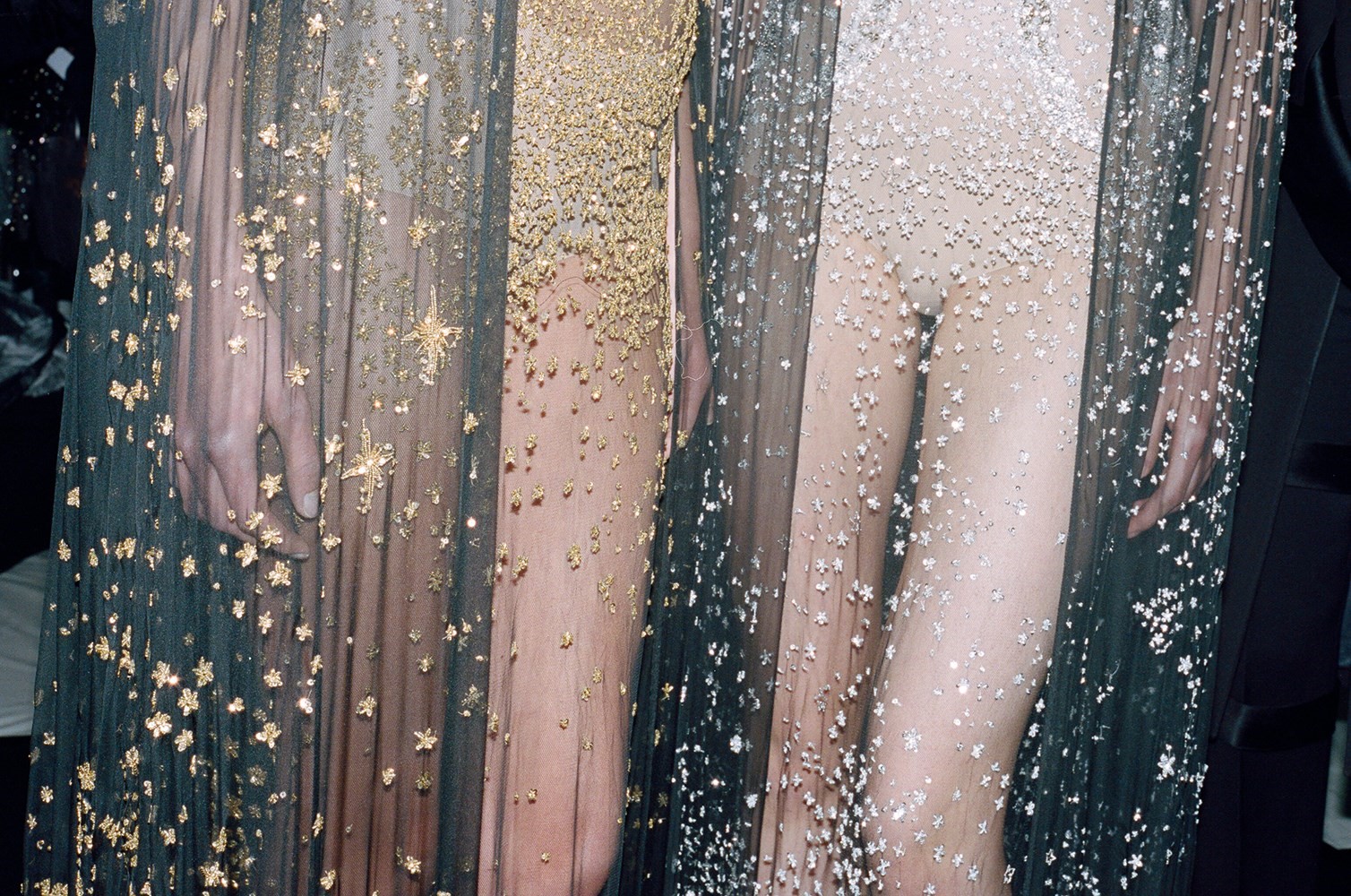
The Power of the Symbol – And Just Feminine Power
Unicorns – mythological creatures associated with love – butterflies – suggestive of the power of transformation and also, in the sense of the Vanitas butterfly, explored by painters of 16th and 17th century northern European still lives, the ephemeral nature of earthly things – vintage perfume bottles, mirrors and powder compacts – denoting vanity in its more colloquial and contemporary sense – and, of course, the ultimate symbol of femininity, the moon, were printed, appliquéd and embroidered onto garments, mirror-heeled sandals, velvet slippers, brogues and brothel creepers and also found their way into models’ bedhead hair. "She’s sort of eccentric in a way," Sarah Burton said of the gentle but clearly wayward creature that inspired her tender offering. "There’s that whole thing about gathering treasures that you keep forever." That concept may not unreasonably be seen as the antithesis of the "see now, buy now" point of view that is very much part of the fashion discourse just now. Of course, the McQueen customer will be able to buy the lovely silvery trinkets six months from now but the message, in this instance, was that such precious objects would take a lifetime to collect and that their emotional significance was all the more resonant for that.
